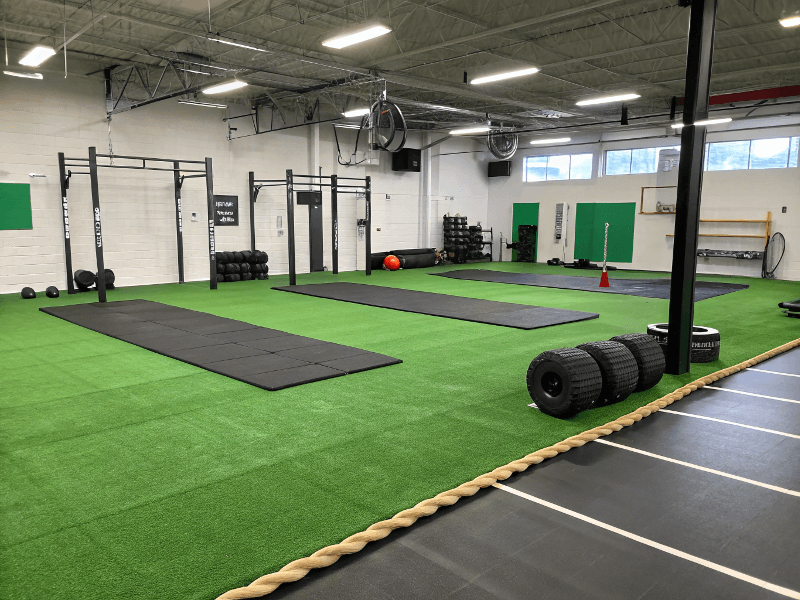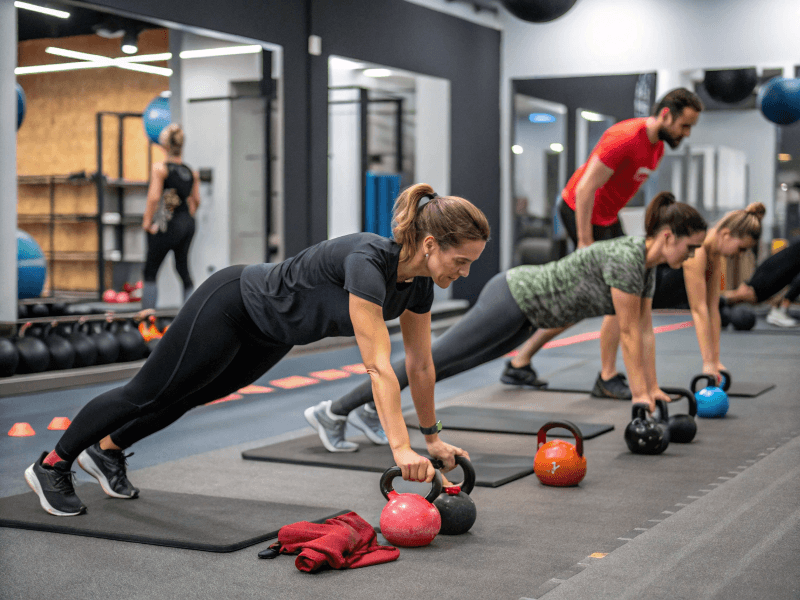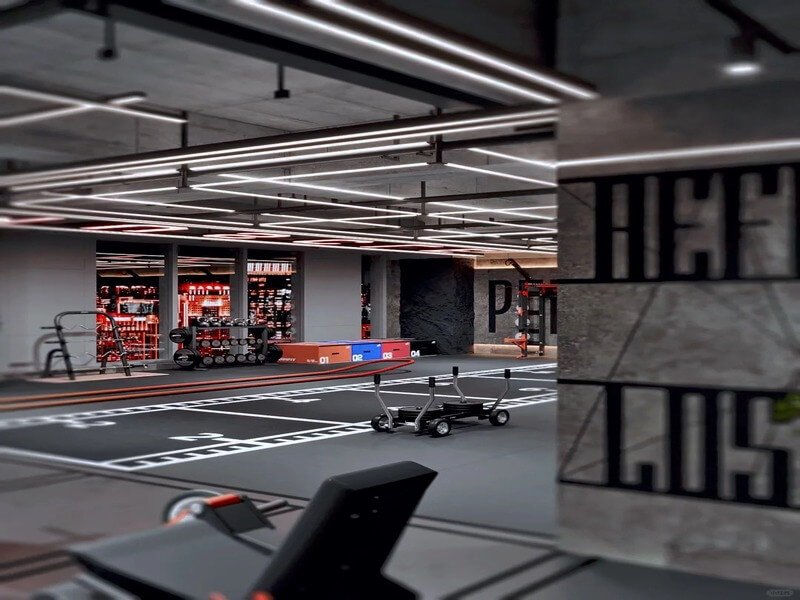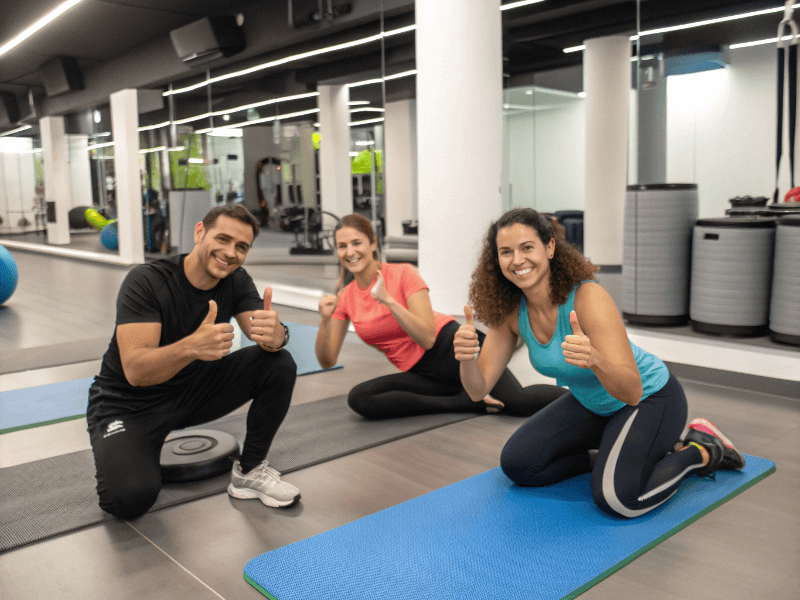The best way is by creating a dedicated zone with two key materials: high-durability gym turf for sled work and agility drills, and high-density rubber flooring for weightlifting and impact absorption. This combination creates a safe, versatile, and visually impressive space that sets your gym apart.
As a contractor, I’ve seen countless gyms. The ones that struggle all look the same. They have rows of machines and maybe a small, sad-looking mat area. The gyms that thrive are different. They understand that members today want more than just a place to lift. They want an experience. They want functional training, Obstacle Course Race (OCR) prep, and dynamic workouts. Creating a dedicated area for this isn’t just a trend; it’s a direct response to a market that is tired of boring, identical gyms. It’s about building a space that creates a community, where members can push sleds, slam balls, and train together. This is how you stop competing on price and start competing on value. You give members a reason to choose you and a reason to stay.

But before you start marking out floor space, you need to fully grasp why this specific area is so important for your bottom line.
Why Should You Even Consider a Functional Training Area?
You should consider it because it directly fights member boredom and price shopping. A unique functional area offers engaging workouts that members can’t get everywhere, building a stronger community and attracting high-value clients who pay for a premium experience. This boosts retention and revenue.
I talk to gym owners all the time. The most common complaint I hear is the constant pressure to lower prices because a new gym opened up down the street. It’s a race to the bottom that no one wins. A functional training zone is your way out of that race. It becomes a core feature of your brand. When members can do sled pushes, battle ropes, and agility drills, their training is more fun and varied. They get better results and are less likely to leave. It also creates a natural space for personal trainers to run small group classes, which is a huge source of extra income. On one of my recent projects, the owner told me the new turf lane paid for itself in three months just from the new group sessions his trainers were able to sell.

So you see the ‘why’. Now let’s get into the ‘how’ and talk about the actual materials you’ll be installing on your floor.
What’s the Best Flooring Combo for a Functional Zone?
The best combination is gym turf designed for athletic performance alongside high-density rubber flooring. This duo provides the perfect balance of smooth gliding for sleds, grip for agility, and extreme shock absorption for heavy weight drops. This covers all your needs for safety and durability.
Getting the flooring right is the most critical part of the job. It’s the foundation of the entire space. You can’t just throw down some cheap carpet or thin mats. From my experience building these zones, the combination of turf and rubber is undefeated for a reason. Each material does a specific job that the other can’t.
The Role of Gym Turf
Good athletic turf is built for abuse. Its main job is to provide a smooth, low-friction surface that still has some grip. This is perfect for pushing and pulling sleds. The sled glides smoothly without catching, giving a consistent resistance. It’s also great for agility ladder drills, sprints, and battle ropes. I always tell clients to look for turf with a short, dense pile and a built-in foam backing. This adds a little bit of cushion and makes it much more durable than the cheap stuff.
The Job of Rubber Flooring
Right next to the turf, you need high-density rubber. This is your "drop zone." Its only job is to absorb massive impact. When a member drops a 200kg deadlift, this floor protects your concrete subfloor from cracking and protects the member’s expensive barbell and plates from damage. For a serious free-weight area, I never install anything less than 2.5cm (1 inch) thick. Anything thinner just won’t do the job, and you’ll end up with costly repairs down the line.

This kind of professional setup sounds like it would cost a fortune, but it really doesn’t have to break the bank.
How Can You Create This Zone Without a Huge Budget?
You can start small and be smart with your space. You do not need a massive area. A dedicated corner or a narrow strip can be incredibly effective. A smart combination, like a turf runway surrounded by rubber tiles, gives you maximum function for a minimal investment, making it a high-return upgrade.
Many gym owners think they need to dedicate a huge section of their facility for this to work. That’s not true. I’ve seen amazing functional zones built into as little as 20-30 square meters. The key is efficient design. One of the most popular and cost-effective layouts I install is a simple turf runway. We’ll lay down a 2-meter wide by 10-meter long strip of gym turf. This is plenty of space for sled work and sprints. Then, we surround the remaining area with thick rubber tiles. This gives members the drop zone for weights right next to the turf. The total cost for a setup like this is often less than a single high-end treadmill, but the value it adds to the member experience is ten times greater. It instantly creates a visual "wow" factor and a hub of activity in your gym.

You might be thinking this all sounds good in theory. Let me tell you about a real gym that I worked with that put this exact plan into action.
Does This Approach Actually Work for Real Gyms?
Yes, absolutely. A client of mine transformed a dead corner of his gym into a functional training hub with this exact turf-and-rubber approach. His member engagement skyrocketed, his trainers created new classes, and his retention rate saw a measurable increase within six months.
I remember getting a call from a gym owner named Wang. He was struggling. His gym was nice, but it was just like every other gym in his city. His renewal rate was dropping. We walked his facility, and he had a corner that was basically used for storing old yoga mats. We took that underutilized space and put in a 15-meter turf lane and surrounded it with our thickest rubber flooring. The change was immediate.
Members started filming their sled pushes for social media. The personal trainers, who were bored before, suddenly had a new playground. They created a "Functional Strength" small group class that sold out in a week. Mr. Wang told me later that the whole vibe of the gym changed. It felt more energetic. And the numbers backed it up. He reported a 15% jump in his member renewal rate because people were excited about their workouts again. It proved that a small, smart investment in the right space can deliver huge results.

The evidence is clear, and the path forward is straightforward.
Conclusion
Building a functional area with turf and rubber is a smart, affordable investment. It will grow your gym, attract better members, and secure your business’s future.
Contact us today for a free quote and material samples to see and feel the quality for yourself.

![6.9社媒我在郑州最美的商场,开了家最美的健身房 2 任路飞 来自小红书网页版 11[1]](https://meettfit.com/wp-content/uploads/2025/06/6.9社媒我在郑州最美的商场,开了家最美的健身房_2_任路飞_来自小红书网页版_111.jpg)